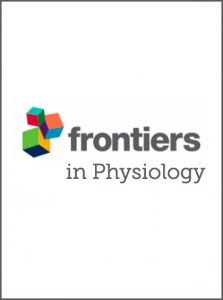Publications

Alterations in skeletal muscle health and biomechanical properties in patients with early rheumatoid arthritis: an exploratory cross-sectional study
Authors: Brian J. Andonian 1, 2, Hailee Patel 3, 4, Mingzhi Xu 3, Alyssa M. Sudnick 2, Johanna L. Johnson 2, William E. Kraus 2, George A. Truskey 3, Kim M. Huffman 1, 2
Affiliations:
- Division of Rheumatology and Immunology, Department of Medicine, Duke University School of Medicine, Durham, NC, United States
- Duke Molecular Physiology Institute, Duke University School of Medicine, Durham, NC, United States
- Department of Biomedical Engineering, Duke University, Durham, NC, United States
- Department of Biomedical Engineering, Texas A&M University, College Station, TX, United States
Journal: Frontiers in Physiology - April 2025, Volume 16, Article no. 1575689 (DOI: 10.3389/fphys.2025.1575689)
-
Field & Applications:
- Medical
- Rheumatology
- Musculoskeletal disorder
- Musculoskeletal health
- Progression monitoring
- Myotonometry assessments of the skeletal muscle are relatively quick, simple to perform, and are relatively inexpensive. Thus, implementing myotonometry in the clinic is feasible to include in the routine clinical management and monitoring of RA, especially as it impacts skeletal muscle health.
- RA has a unique myotonometry profile that may offer an opportunity for comprehensive longitudinal assessment to isolate the muscle effects of RA inflammatory disease from those of comorbid fibromyalgia and mental health disorders.
- Myotonometry may serve as an important tool to screen, evaluate, and monitor corticosteroid-induced myopathy.
Background: Skeletal muscle disease in patients with early-stage rheumatoid arthritis (RA) is understudied. The objective of this study was to identify whether patients with early RA (symptoms <6 months) have impaired skeletal muscle health.
Methods: Participants with early RA (n = 10) and age-, sex-, and BMI-matched healthy controls (n = 10) underwent cross-sectional clinical, physiological, and muscle biomechanical property assessments. Upper and lower extremity muscles underwent in vivo passive biomechanical property—tone, stiffness, and elasticity—assessments via myotonometry (MyotonPRO®). In vitro muscle force production and stiffness were assessed using 3D bioengineered myobundles derived from myoblasts obtained from vastus lateralis muscle biopsies.
Results: Despite similar muscle mass and self-reported physical activity behaviors for patients with early RA and healthy controls, patients with early RA had poorer self-reported physical function, self-reported physical health, and right-hand grip strength (p < 0.05 for all). Early RA muscle tone and stiffness were lower than in controls (p < 0.05) and had an inverse association with prednisone use (rho = −0.72, p = 0.02). While 3D bioengineered myobundle force production and passive stiffness were similar to controls, early RA myobundle stiffness correlated with swollen joint count (rho = −0.67, p = 0.04).
Conclusion: In this exploratory study, patients with early RA exhibited multiple skeletal muscle deficits across clinical, physiologic, and biomechanical domains compared to controls with similar muscle mass and physical activity. In vivo and in vitro skeletal muscle biomechanical assessments may be useful to identify these deficits to better understand and improve RA muscle health.

Figure 1. Myotonometry and myobundle experimental setup. (A) Experimental setup with myotonometry (MyotonPRO) assessment sites (X; completed in order: right biceps brachii, right forearm flexor, right vastus lateralis, right tibialis anterior, left biceps brachii, left forearm flexor, left vastus lateralis, left tibialis anterior) and biopsy site (circle; left vastus lateralis); (B) MyotonPRO assessments completed with participants in the prone position; (C) Myobundle culture experimental setup; (D) Representative tracing of the MyotonPRO that generated the acceleration signal; (E) Representative tracing of the myobundle twitch force measured using a force transducer system.
Keywords: rheumatoid arthritis, skeletal muscle, physical function, biomechanical properties, grip strength
In this exploratory study, patients with early RA exhibited deficits in skeletal muscle health across multiple domains, including clinical, physiological, and muscle biomechanical properties. Assessments of bioengineered 3D myobundles did not differ between early RA and age-, sex-, and BMI-matched healthy control groups and were not highly associated with muscle biomechanical properties assessed in vivo via myotonometry. However, differential RA–control group associations of myobundle force production with inflammation and physical performance suggest unique features of RA skeletal muscle disease that are imparted to myoblasts and subsequent myobundle generation. Further comprehensive translational studies of early recognition, monitoring, and intervention for RA skeletal muscle disease are needed to improve and personalize care for patients with RA.


